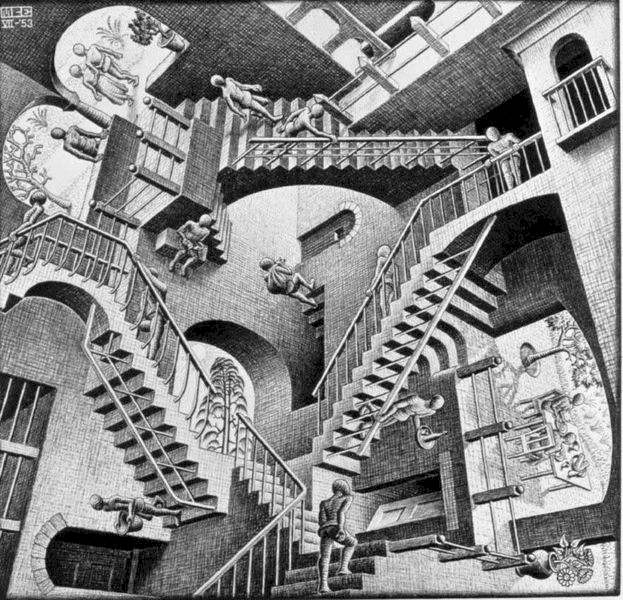
For Design Art class 2010, my class did tessallations. Firstly, we folded a small piece of square paper twice and drew on 1 of the 4 boxes and pattern, using a Sharpie. Then over a lightbox we traced the opposite of the pattern across from it on another box. We kept drawing using the lightbox to see through the paper until it filled up the whole piece of paper and we had a whole pattern. The pattern had to tessallate, meaning both halves of the paper are mirror opposites of each other. Next, I took 7 pieces of the same size square of paper and again, using the lightbox to trace, I copied the tessalation over and over on the papers. When I finished tracing, I picked 2 colors (purple and pink) and colored parts of the tessallation that I wanted to have color. Then i did the same to all of the other copies. The original paper I used as a model. Finally, I came up with a shape I wanted to stick the papers together as, and I framed my work of art on a big purple piece of paper, to match the color of my tessallation.
I felt relaxed while working with this project, because my friends and I were just sitting at the lightboxes and we were talking while working and it was fun. Problems I ran into along the way was when I copied the tessalations over and over, the lines weren't exact and when I put the copies together and I had to work my way around the mistakes. Looking out for mistakes also increased my powers of observation. The elements of art were Lines and Color, which is the unit we're doing right now. I'm really proud of what I've created, it all worked out in the end. Overall, I would give it about 4 out of 5 in terms of me liking it.
The things I learnt doing this project were how to draw a complicated pattern over and over. I always thought that artists had to draw it all by hand. Now I understand the power of the light box, and what an important tool it is for designing. I also learnt how to look closely at where the pattern joins with another piece of paper, I had to be careful because if I didn't look carefully, then the pattern wouldn't be exact and it wouldn't be a good tessellation.
We got inspired to do this project by a brilliant artist named M.C. Escher, who was incredibly lucky to be gifted in both math and art. He incorporated math into his work because his tessellations were always exact and the perspective he used to draw the scenes are very hard to do. He would measure everything, then draw.
Here's a picture of one of his works of art.

It's very confusing to look at, you can't even tell if the perspective is from above or from the side.
Some of the skills I learnt while doing this project might come in handy one day, if I ever decide to become an artist.

No comments:
Post a Comment